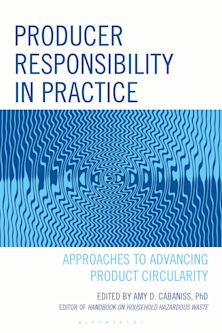Historical Dictionary of the Petroleum Industry
Historical Dictionary of the Petroleum Industry
This product is usually dispatched within 1 week
- Delivery and returns info
-
Free CA delivery on orders $40 or over
Description
The petroleum industry is unique: it is an industry without which modern civilization would collapse. Despite the advances in alternative energy, petroleum’s role is still central. Petroleum still drives economics, geopolitics, and sometimes war. The history of petroleum is, to some measure, the history of the modern world. This book represents a concise but complete one-volume reference on the history of the petroleum industry from pre-modern times to the present day, covering all aspects of business, technology, and geopolitics. The book also presents an analysis of the future of petroleum, and a highly useful set of statistical graphs. Anyone interested in the history, status, and outlook for petroleum will find this book a uniquely valuable first place to look. This new second edition incorporates all the revolutionary changes in the petroleum landscape since the first edition was published, including the boom in extraction of oil and gas from shale formations using techniques such as fracking and horizontal drilling.
This second edition of Historical Dictionary of the Petroleum Industry contains a chronology, an introduction, appendixes, and an extensive bibliography. The dictionary section has over 500 cross-referenced entries on companies, people, events, technologies, countries, provinces, cities, and regions related to the history of the world’s petroleum industry. This book is an excellent resource for students, researchers, and anyone wanting to know more about the petroleum industry.
Table of Contents
Preface
Acknowledgments
Acronyms and Abbreviations
Chronology
Introduction
THE DICTIONARY
Appendixes
1 Petroleum Industry Units and Conversions
2.Major Middle Eastern Consortia of the Seven Sisters and CFP
3. Various Companies with Roots in Standard Oil
4. Top Five Oil-Producing Countries for 20-Year Intervals Since 1861
5. Sweet and Sour Crudes
6. Crudes in the OPEC Basket
7. Major Oil Supply Disruptions
8. Tanker Classification
9. Largest Oil Spills
10. Refinery Fractions
11. Largest Oil Fields
12. Largest Gas Fields
13. Other Giant Oil and Gas Fields of Historical Interest
14. Figures
Bibliography
About the Author
Product details
| Published | Jun 20 2018 |
|---|---|
| Format | Hardback |
| Edition | 2nd |
| Extent | 670 |
| ISBN | 9781538111598 |
| Imprint | Rowman & Littlefield Publishers |
| Illustrations | 11 tables; 55 graphs |
| Dimensions | 237 x 160 mm |
| Series | Historical Dictionaries of Professions and Industries |
| Publisher | Bloomsbury Publishing |
Reviews

ONLINE RESOURCES
Bloomsbury Collections
This book is available on Bloomsbury Collections where your library has access.


































